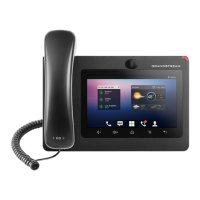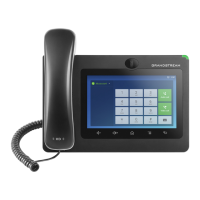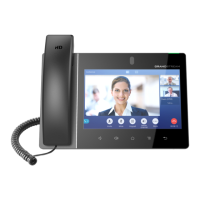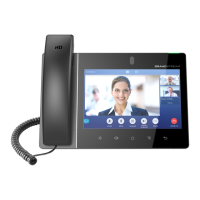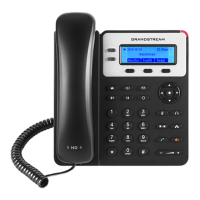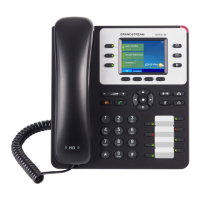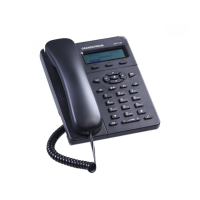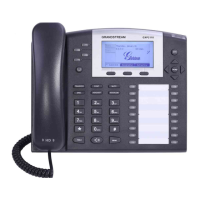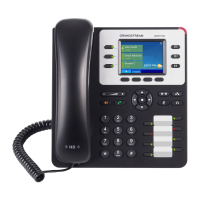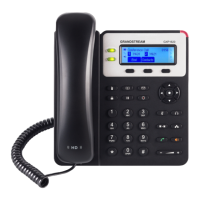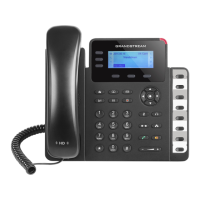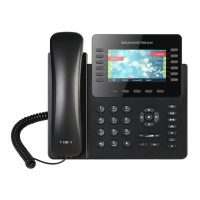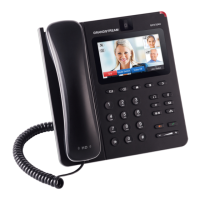









Do you have a question about the Grandstream Networks GXV3240 and is the answer not in the manual?
| Display | 4.3-inch color LCD |
|---|---|
| Camera | 1 megapixel CMOS camera |
| Audio Codecs | G.711, G.722, G.723, G.726, G.729, iLBC, OPUS |
| Video Codecs | H.264 |
| Network Interfaces | 2 x 10/100/1000 Mbps Ethernet ports |
| Protocols Supported | SIP, SRTP, RTP, RTCP |
| Power over Ethernet (PoE) | Yes (IEEE 802.3af Class 2) |
| Operating System | Linux-based |
| Bluetooth | Yes |
| Wi-Fi | Yes |
| Auxiliary Ports | 3.5mm headset jack |
| HD Audio | Yes |
| Supported Languages | English, French, Spanish, German, Italian, Portuguese, Russian, Chinese, Japanese, Korean |
| Security | TLS, SRTP, HTTPS, 802.1x |
Key features and capabilities of the GXV3240 IP Multimedia Phone.
Detailed technical specifications for the GXV3240 phone.
Lists the items included in the GXV3240 package.
Step-by-step guide to connect the GXV3240 phone physically.
Details on setting up the GXV3240 with an extension module.
Explains how to interact with the GXV3240's touch interface.
Guide to navigating and managing the GXV3240 desktop environment.
How to add application shortcuts to the home screen.
Steps to add widgets to the GXV3240 desktop.
Operations to manage shortcuts and widgets on the desktop.
How to customize the phone's background wallpaper.
Managing active applications on the GXV3240.
Customizing and managing the phone's idle screens.
Understanding the GXV3240 status bar icons and functions.
Explains icons for notifications in the status bar.
Accessing system settings via the status bar.
Process for registering SIP accounts on the GXV3240.
Making calls by directly dialing a number.
Making calls using the phone's contact list.
Making calls from the call history log.
Making calls directly between phones using IP addresses.
How to answer incoming audio and video calls.
Placing and resuming calls on hold.
Recording active calls.
Muting and unmuting calls.
Changing audio output during a call.
Transferring calls to another party.
Setting up and managing 6-way conference calls.
How missed calls are displayed and managed.
Enabling and disabling the Do Not Disturb feature.
Configuring call forwarding options.
Configuring and using Shared Call Appearance.
Using various telephony call features and codes.
Managing contacts stored locally on the device.
Importing and exporting contact lists.
Downloading contacts from a server.
Finding contacts by name or number.
Adding contacts to the favorites list.
Modifying existing contact information.
Creating desktop shortcuts for contacts.
Sharing contacts using Bluetooth.
Adding contacts to the blacklist.
Creating and managing contact groups.
Checking the remaining storage for contacts.
Syncing contacts with external accounts.
Using LDAP server for contact access.
Accessing BroadWorks Xsi contacts.
Viewing the history of blocked calls.
Adding new numbers to the blacklist.
Modifying entries in the blacklist.
Configuring blacklist behavior and notifications.
Accessing and managing the local call log.
Options for managing call history entries.
Viewing detailed information of call history entries.
Accessing call history from BroadWorks Xsi.
Reading received SMS messages.
Composing and sending new SMS messages.
Removing SMS messages from the device.
Signing into the calendar with a Google account.
Displaying calendar events in different formats.
Adding new events to the calendar.
Options for managing calendar data.
Setting up email accounts on the GXV3240.
Options for sending, searching, and managing emails.
Adding and managing multiple email accounts.
Browsing available applications in the GS Market.
Finding specific applications within the GS Market.
Downloading and installing applications from GS Market.
Updating installed applications.
Removing installed applications.
Managing files stored on the device or external storage.
Setting up and using the FTP server for file transfer.
Recording audio using the built-in recorder.
Accessing files downloaded via the browser.
Finding the geographical location based on an IP address.
Troubleshooting hardware issues with diagnostic tools.
Capturing still images using the phone's camera.
Recording video clips with the phone's camera.
Adjusting camera settings like brightness and white balance.
Viewing and managing photos and videos.
Playing audio files using the music player.
Using the built-in web browser.
Adding and using the RSS News widget.
Using the weather widget and its settings.
Configuring the Plug and Play application.
Activating the PNP feature.
How the PNP feature works.
Configuring Ethernet network connections.
Connecting to Wi-Fi networks.
Managing Bluetooth connections and settings.
Connecting and accessing USB storage devices.
Connecting and accessing SD cards.
Connecting and configuring HDMI output.
